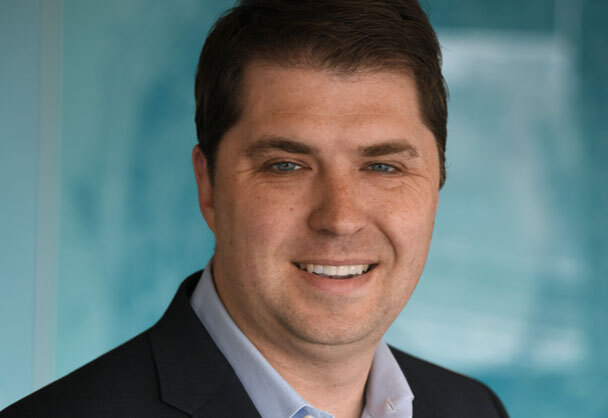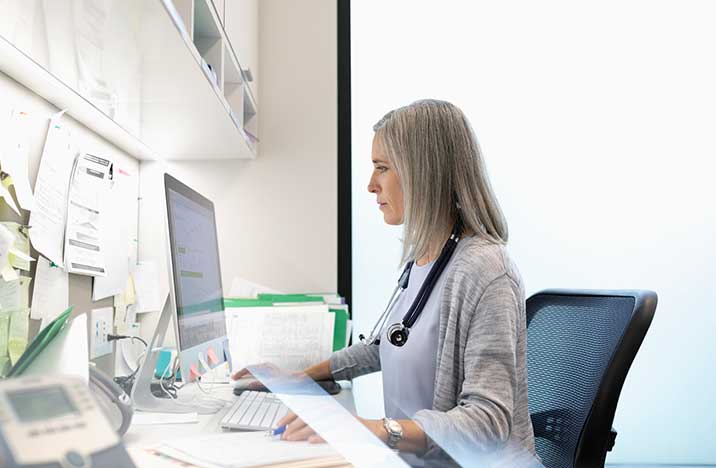Achieving the Delicate Balance with OR Med Management
Podcast Episode 12
Introduction
Anesthesia providers need easy access to medications in the operating room. Pharmacy needs to keep medications secure. Achieving that delicate balance in the OR pressure cooker between access and accountability requires an aligned vision, dynamic communications, and enabling closed-loop technology.
Participants
Host:
Ken Perez, Vice President, Healthcare Policy and Government Affairs, Omnicell, Inc.
Guest Expert:
Dr. Patrick Guffey, MD, MHA, CMIO, Performance Improvement & Informatics Officer, Children's Hospital Colorado

Dr. Patrick Guffey, MD, MHA, CMIO
Performance Improvement & Informatics Officer, Children's Hospital Colorado
Episode Highlights
Q: As a member of the Board of Directors for the Anesthesia Quality Institute of the American Society of Anesthesiologists, you have a unique vantage point on OR medication safety. What are you seeing?
Dr. Guffey: Over the years, I’ve seen case reports of the things that have gone wrong in operating rooms. Many of those case reports are medication related. There are cases where drugs were administered for the wrong patient. Issues with sorting and matching up the right drug on the right pump. And manual workflows that essentially put a lot of pressure on the OR team to accomplish all of this without any benefit of technology. So that's really a critical marker that we see.
Q: About half the nation’s hospitals now use automated systems to manage medications in the operation room. What are the potential safety gaps for those still using manual medication workflows?
Dr. Guffey: There are several. The first issue in a manual OR is that you don't have great accessibility to all of the narcotics you need. Sometimes, a clinical situation arises that you weren't expecting. So at that point, if you don't have all the drugs you need and they're not readily accessible, then you've got a potential safety issue. Or, maybe, you’re not using the drug you’d like to use, you’re using the drug that you have on hand.
The second safety issue is related to all of the manual steps with drug labeling.
Third is staff safety. Manual processes create more opportunities for diversion. It means manual recording of information without automatic tracking. That creates a concern that it may be a little bit easier to divert narcotics in a way that's not immediately detected. And when you can't detect fast, the results can be the patient may not be getting the needed drugs, which is highly concerning. Or, the anesthesiologist or nurse anesthetist is at risk of harming themselves. It’s really up to all of us to work together to detect diversion and to keep everybody in the process safe.
Q: In such a dynamic environment, with cases coming one right after the other, what are the dangers of a manual OR environment?
Dr. Guffey: The biggest issue is that a manual process has the potential for human error and is not typically what you might call a highly reliable process. Through proper application of technology, you can achieve a higher degree of reliability, which then translates to a higher degree of safety and potentially even improved outcomes, depending on what it is.
This is a highly complex set of steps that need to be accomplished correctly every time without any help from technology.
Q: Walk us through those steps, in a typical case in a manual OR.
Dr. Guffey:
- You organize and setup for each case, predicting exactly what medications you need, and then getting it from pharmacy.
- You go through and manually label all the information with the correct patient.
- You get the correct medication out of the bag or fanny pack or a cart.
- Retrieve the diluent.
- Prepare the correct amount of medication to be administered.
- Prepare your medication label and apply the correct label to the correct medication.
- Mash it up against the vial.
- Administer the medication.
- Redundantly document the medication was administered on the anesthesia record and the EHR.
- Process all of your returns, waste, and reconciliations.
Q: What is redundant documentation?
Dr. Guffey: Dual manual documentation is something that's really important to focus on. Basically, in a manual environment, I'm documenting on my paper anesthesia record all the medications that I've given to all the patients listed in my electronic health record. And then I'm having to document all of that same information on this paper form to make sure that the right dose, the right drug, matches the right patient, so the post-case reconciliation can be achieved.
Q: What do you mean by the term “reliability”?
Dr. Guffey: Really, it's high reliability. For instance, you can design a process that is high quality, and many of us have done that through our work. But the question is, is how often is that high quality process carried out in a reliable fashion? And my own biases is that if you want the process to be carried out and highly reliable, every time, this is how we do it. Then it's really important to apply technology that allows you to do that.
What we're striving for is that it's done the same way in a reliable fashion and also in a fashion that produces a high quality result. It's important to note that those really are two different things. You can get it right with a single patient on a single day. But what we're looking for is for that provider to get it right on every patient for years without error. Doing that without technology is a pretty difficult thing to do.
Q: Compliance is another issue that comes up.
Dr. Guffey: You know, compliance is interesting. Compliance is something that we all have to do. The question is, how do you make it easy for people to do it? Because you're not getting out of it, whether it's a paper process or whether it's an electronic process.
Being compliant with all of the necessary regulations is certainly easier with technology, as we've talked about today. So really defining that because you'll find some places where the manual process may not be compliant with all of the regulations in a reliable way. So if you're going to set that as a baseline, that we have to meet those regulatory needs, then you can show how technology can make that easier. Rather than just twisting the screws on a manual process.
Q: What are some basic first steps to take in moving to an automated OR environment?
Dr. Guffey: First, start with observation. Really look into your current manual process and write down all of the things that can go wrong. Use that observation to create that “burning platform” case for change. That'll allow you to go back to the group for that first thoughtful conversation and say these are all the things we're seeing that go that go wrong on a daily basis.
For instance, this is the amount of time you're spending, documenting things on paper, with pharmacy coming back and saying that you you've got it wrong, and you need to redo it because your math didn't add up.
Finding those things and highlighting them is critical. And then taking that back to the group and identifying those champions that are going to help you lead through it and talking about how you can make it better.
The second thing is to really think about those patient safety aspects. Like we were talking about before, the case reports that have come in, we have seen in cases where the wrong drug is administered, call it a syringe swap. We've seen cases where not having immediate availability to the drugs you need can cause care delays. We've also seen cases where drugs have been given to the wrong patient, or used on multiple patients.
Dealing with medication on a per-patient basis without using vials between patients—that leads to a safer environment. So really, it's what do you need for that specific anesthetic? And then making sure that you waste all of the medications for that specific anesthetic before moving on to the next one. So that's really an important thing to do.
The third thing is to not to be afraid of having that conversation about diversion and staff safety. It’s talking about how allowing faster detection of diversion, and also the benefits of that external locking bin on the AWS cart, and how you can waste yourself in a more reliable way. Those are really critical benefits that I think sometimes are overlooked, and it's important to have those conversations. So I would start with those three things in addition to what we've talked about.
DISCLAIMER
The Future of Pharmacy Podcast is produced and distributed by Pharmacy Podcast Network. The views and opinions expressed in this podcast are those of the authors and do not necessarily reflect the official policy or position of any other agency, organization, employer or company. Assumptions made in the analysis are not reflective of the position of any entity other than the author(s). These views are always subject to change, revision, and rethinking at any time and may not be held in perpetuity.
 Back to Podcast
Back to Podcast

